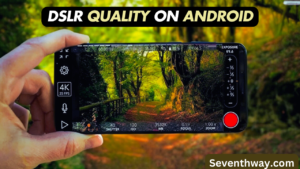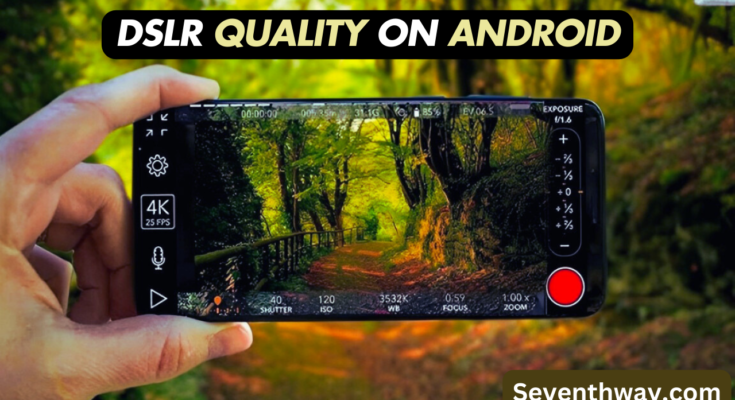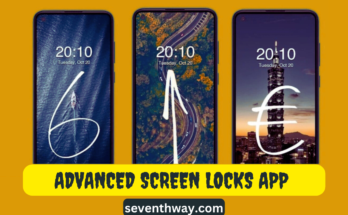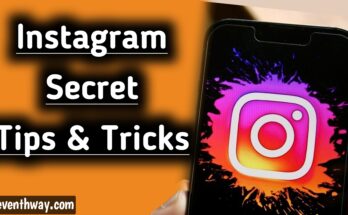DSLR Quality On Your Phone- Ultra HD Camera Result- The idea of taking beautiful, DSLR-caliber pictures with a smartphone is no longer a pipe dream. The field of photography has long been dominated by DSLR cameras, but Android devices are catching up. With the correct methods and equipment, Android cameras may now achieve amazing results that are on par with those from professional cameras, all thanks to developments in smartphone technology.
DSLR Quality On Your Android
You’ve come to the correct spot if you’ve been wondering how to acquire Android phone photos that seem like they came from a DSLR. We’ll show you how to transform your Android handset into a powerful photography tool, whether you’re shooting low-light conditions, landscapes, or portraits.
Recognizing the Differences Between Smartphone and DSLR Cameras
It’s crucial to grasp the main distinctions between the two kinds of cameras in order to know how to take DSLR-caliber pictures with your Android phone.
1. Sensor Size: The bigger sensors on D-SLRs enable them to record more light and detail. The majority of Android phones have smaller sensors, which may restrict their capacity to capture photographs with a high level of detail or in low light.
2. Lens Flexibility: Changing lenses to suit the scene you’re shooting is a great benefit of DSLRs. However, Android phones are equipped with fixed lenses. However, multi-lens systems available on contemporary phones may replicate DSLR effects, such telephoto or wide-angle photos.
3. Image Processing: After a shot is taken, smartphones mostly depend on software to process it using algorithms to improve it. With manual control options and RAW shooting capabilities, Android phones are bridging the gap between DSLRs and smartphones, which give photographers greater control over every element of the picture.
Can a DSLR Be Replaced by an Android Phone?
The camera technology in today’s top-tier Android phones can produce images that seem to have been taken with a professional DSLR, despite some restrictions. In actuality, Android phones have a number of benefits over DSLRs, including mobility, rapid editing, and user-friendliness.
However, because of their bigger sensors and interchangeable lenses, DSLR cameras continue to have the advantage in harsh environments (such as fast-action sports or complicated lighting scenarios). Nevertheless, your Android can undoubtedly get results that are comparable to DSLRs for the majority of daily shooting demands.
Crucial Advice for Getting DSLR-Quality Images on Your Android
1. Use Manual Controls: Similar to a DSLR, manual controls allow you to modify important parameters like ISO, shutter speed, and focus. To get the finest picture, you may adjust these settings in the camera app of many Android phones using the “Pro Mode” or manual option.
2. Pay Attention to Lighting: A photograph may be made or broken by the lighting. The best light for taking crisp, colorful pictures is natural light. To get better photos while shooting inside or in low light, think about using a reflector or an external light source.
3. Shoot in RAW Format: Compared to compressed formats like JPEG, RAW photographs preserve a lot more information, allowing you more post-processing freedom. To increase your editing capabilities, go to RAW mode if your Android phone supports it.

Top Android Apps for DSLR Results
Several applications that provide more sophisticated settings and improved picture processing may help you get DSLR-like quality on your Android phone. Here are a few of the best choices:
1. Camera FV-5: This software gives you control over focus, exposure, white balance, and other settings, transforming your phone into a powerful DSLR.
2. Adobe Lightroom: Lightroom allows you to handle manual camera settings and supports RAW photography in addition to providing a great mobile picture editor.
3. Open Camera: This free, open-source program offers manual adjustments and HDR capabilities for better images under different lighting circumstances.
Changing Camera Preferences for DSLR-Quality Images
The secret to taking DSLR-quality pictures with your phone is to become proficient with its camera settings. Here is a brief summary of the settings you should pay particular attention to:
ISO: Regulates how sensitive the camera is to light. While a higher ISO is beneficial in low light, a lower ISO is best in bright settings.
The shutter speed of your camera controls the amount of time the sensor is exposed to light. For motion photographs, use a quick shutter speed; for night photography, use a slower speed.
Aperture: While the majority of Android phones don’t let you adjust the aperture, some expensive models do. For portraits, a narrow depth of focus produced by a bigger aperture (low f-stop number) is ideal.
How to Get Better Outcomes on Android by Using Pro Mode
For Android photographers, Pro Mode, often known as Manual Mode, is revolutionary. You may attain DSLR-like accuracy by manually tweaking everything in your photo, including ISO, focus, and white balance. Try adjusting these parameters to have greater artistic control over your images.
Post-Processing Power: Enhancing Your Images
A little post-processing may improve even the best-shot image. To improve exposure, modify sharpness, and enhance colors, use applications like Adobe Lightroom or Snapseed. By using editing, you may enhance your shot and give it a more polished appearance.
Portrait Mode: Producing Bokeh Effects Similar to DSLR
The capability of DSLR photography to produce a bokeh effect, or blurred backdrop, is one of its distinguishing features. Portrait Mode, which blurs the backdrop while maintaining the subject’s great focus, is now available on a lot of Android phones. Make sure the lighting is adequate and change the blur level to fit the desired effect for the best results.



